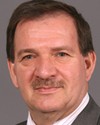If the government wanted to do away with the virtual elimination approach, we wouldn't object, but I think that when you operate a plant and maybe have dioxins coming out of your plant operations, virtual elimination and LOQs and the architecture in here, I believe, make sense. It parallels the way the Stockholm Convention deals with this in its annex C for unintended releases.
I think the real problem occurs with the issue of trace contaminants in products. We've heard a number of people indicate there's an issue with that. We've heard the government say their preference would actually be to deal with that issue through section 93. As I noted in my submission as well, it makes more sense and is more parallel to the Stockholm Convention. They have a separate annex that treats products differently from the way they treat releases.
I think the architecture does make sense and is consistent with the Stockholm Convention for plant releases. Now, if Parliament wants to get rid of that, we aren't going to object, but there is some usefulness in having the goal there of continuing to do as well as we can to continuously reduce emissions like dioxin.



